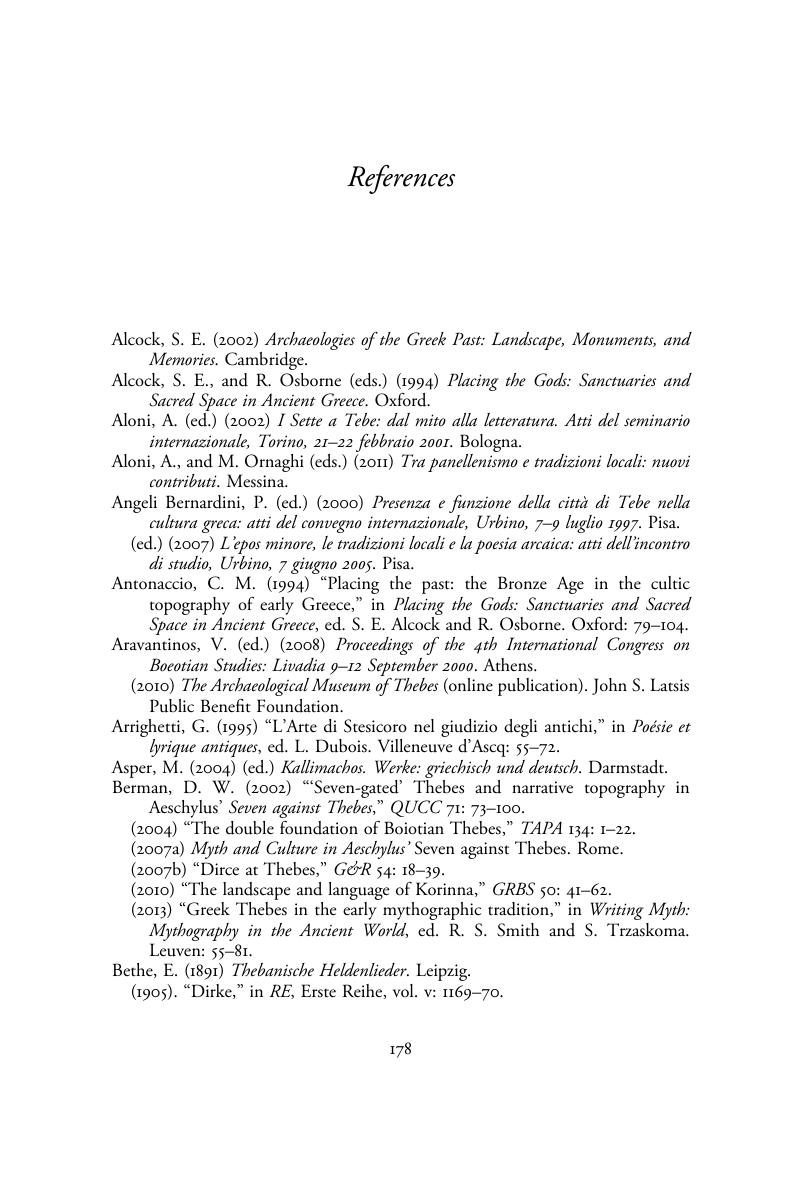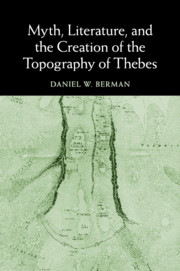Book contents
- Myth, literature, and the creation of the topography of Thebes
- Myth, literature, and the creation of the topography of Thebes
- Copyright page
- Contents
- Illustrations
- Book part
- Introduction Constructing a city
- Chapter 1 Epic Thebes
- Chapter 2 Lyric Thebes
- Chapter 3 Thebes on stage
- Chapter 4 Thebes of the library
- Chapter 5 The creation of Theban topography
- Book part
- References
- Index locorum
- General index
- References
References
Published online by Cambridge University Press: 05 February 2015
- Myth, literature, and the creation of the topography of Thebes
- Myth, literature, and the creation of the topography of Thebes
- Copyright page
- Contents
- Illustrations
- Book part
- Introduction Constructing a city
- Chapter 1 Epic Thebes
- Chapter 2 Lyric Thebes
- Chapter 3 Thebes on stage
- Chapter 4 Thebes of the library
- Chapter 5 The creation of Theban topography
- Book part
- References
- Index locorum
- General index
- References
Summary

- Type
- Chapter
- Information
- Myth, Literature, and the Creation of the Topography of Thebes , pp. 178 - 184Publisher: Cambridge University PressPrint publication year: 2015



